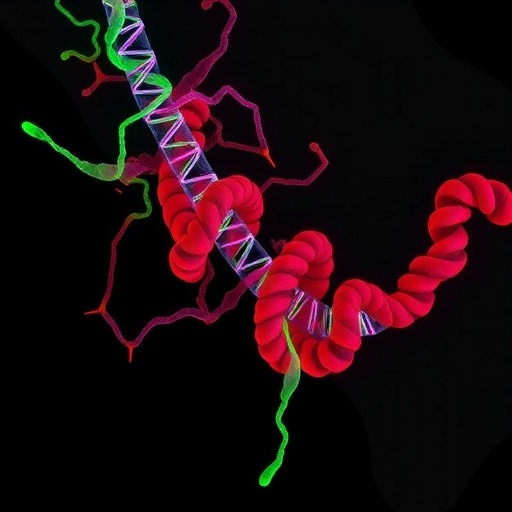NASA has taken a unique approach to exploring the universe by converting cosmic data into music. The US-based space agency…
Blog
-

Pope Leo at Angelus: Pray for peace and for families suffering due to war
Angelus
Angelus Dómini nuntiávit Mariæ.
Et concépit de Spíritu Sancto.
Ave Maria…Ecce ancílla Dómini.
Fiat mihi secúndum verbum tuum.
Ave Maria…Et Verbum caro factum est.
Et…Continue Reading
-

NeurologyLive® Brain Games: December 28, 2025 | NeurologyLive
Welcome to NeurologyLive® Brain Games! This weekly quiz series, which goes live every Sunday morning, will feature questions on a variety of clinical and historical neurology topics, written by physicians, clinicians, and experts in the fields…
Continue Reading
-

Women’s Basketball Heads to DePaul on Monday
Villanova returns to action on Monday, Dec. 29, with a road game at DePaul. The Wildcats enter play riding an eight-game winning streak with a 10-2 overall record and a 3-0 conference mark, while the Blue Demons are 3-11 on the year and 0-3 in…Continue Reading
-

LncRNA AC040169.1 Enhances Ovarian Cancer via m6A Regulation
In the intricate realm of cancer research, the understanding of long non-coding RNAs (lncRNAs) has significantly evolved over the past decade. Among these, lncRNA AC040169.1 has emerged as a critical player in the progression of ovarian cancer….
Continue Reading
-

Brigitte Bardot, French film icon turned far-right provocateur, dies at 91 | Cinema News
The French star reshaped post-war cinema before retreating from global fame into animal rights activism and, later, far-right politics.
Published On 28 Dec 2025
Brigitte Bardot, the French…
Continue Reading
-

Labour must learn lessons from history as automation hits jobs market | Richard Partington
Walk through a supermarket and the technology is everywhere. Self-service checkouts, electronic shelf labels, handheld barcode scanners and the video screens showing you – caught by AI facial recognition cameras – leaving the shop.
In an economy struggling for growth, the encroachment of these machines in our everyday lives could be an early sign of a new dawn – a tech-driven renaissance in activity after years of flatlining growth in productivity and stalled business investment. No bad thing.
On the other hand, it could be the glimpse of a dystopian future that is already beginning to take shape. Of retailers using tech with low running costs instead of low-paid, but relatively more expensive, humans. A productivity boom. But who for?
In the past year unemployment in Britain has risen to the highest rate in a decade, excluding the height of the Covid pandemic. Meanwhile economic output has maintained a reasonable, if pedestrian, pace of growth. Put those two things together and rising levels of productivity – output per hour of work – is the mechanical consequence.
Much of the gains are down to tumbling employment in low-paying sectors – retail in particular, where jobs are being shed and hiring frozen in the face of rising labour costs.
Bosses have blamed the government. This year’s £25bn hike in employer national insurance contributions (NICs) and living wage increases are among reasons the British Retail Consortium (BRC) gives for a 10% jump in the cost of employing people in full-time entry-level retail roles. The trade association also complains about Labour’s employment rights bill and packaging costs hitting jobs.
At this time of year, retailers typically take on hordes of staff for the festive season. However, this year has not matched the usual pattern.
Figures from the jobs website Adzuna showed retail vacancies fell by almost 6% in November, typically the key month for hiring. Openings are at the lowest point in a decade, excluding the Covid pandemic.
Much of this is down to feeble consumer demand and the boom in online retail. However, the rise of the machines is also playing a role. Industry surveys show investment in automation rank second as the most common response to Labour’s business tax changes, after raising prices.
Taken together, it is hardly surprising retail employment has collapsed by more than 350,000 in the past decade. Young people applying for lower-skilled, entry-level positions – which also happen to be easier to automate – have borne the brunt.
Within Labour circles, there is an unspoken logic to driving up the cost of employment. For too long, firms have relied on paying poverty-level wages to turn a profit. UK firms have lagged behind in the G7 investment league tables for decades. Economists reckon some of that is down to a lower relative cost of employing labour versus capital – especially in volatile economic times.
Recently, however, the balance has shifted. Employment costs are up; access to immigrant labour is down, and workforce participation has fallen amid rising levels of ill-health and early retirement. Much of this is the outcome of policy choice.
“The higher your employment costs, regulation, and risk around hiring – the more likely you are as a business to consider options to automate,” says Tera Allas, a professor at the Productivity Institute, a research organisation.
So far, the data shows the UK is still in the foothills of the turnaround.
Business investment has not exploded, but is rising – with a 1.5% increase in the third quarter. Meanwhile productivity rose 1.1% compared with a year earlier. Although still short of the 2% pre-2008 financial crisis annual average productivity growth, that is better than the flatlining of investment of recent years.
Successive governments have treated productivity as a silver bullet to Britain’s decades of economic underperformance. None, however, would have campaigned for any gains to come at the expense of workers.
There is also an irony in the prospect of a “jobs-lite boom” under Labour – a party tracing its roots, however thinly today, to the struggle of organised labour amid the galloping productivity gains of the Industrial Revolution.
In the early 19th century, factory owners investing in steam-driven power looms, knitting frames and mill engines fuelled a productivity boom. At first, the spoils went largely to the capitalists – in a period later described as “Engel’s pause”, after the philosopher Friedrich Engels, to describe the years of wage stagnation as Britain became the world’s richest economy. Many angry workers turned to rebellion.
In the long run, living standards rose as workers shifted into new occupations. The Luddites were on the wrong side of history. However, progress was not without social upheaval, nor taken for granted. There were struggles for employment rights and pay through the nascent trade union movement – culminating in political representation and the creation of the modern welfare state.
There are clear parallels today. This month, Andrew Bailey warned that job displacement similar to the Industrial Revolution was highly probable – with the Bank of England governor calling for the UK to have “training, education, [and] skills in place” to help those at risk.
Allas says there are reasons to be hopeful, not least because new technologies typically help to create new forms of work – enabling people to leave behind menial tasks. Businesses, too, worry about the consequences of losing their pipeline of middle managers if all the entry-level work is automated out.
“Humans are infinitely resilient. We have a capability to learn and we’ll figure out how to learn in new ways,” she says.
However, there will be serious problems if the transition is not managed well. Workers will demand to be brought along, not left behind. For Labour there are a few lessons from history.
Continue Reading
-
Development and implementation of explainable AI-based machine learning models for predicting hospital stay and treatment costs in cardiovascular patients
Tran, D. T., Palfrey, D. & Welsh, R. The healthcare cost burden in adults with high risk for cardiovascular disease. PharmacoEconomics Open. 5 (3), 425–435 (2021).
Roth, G. A. et al. Global…
Continue Reading
-

Amid spiralling debt crisis, Pakistan to sell $1bn Fauji Foundation stake to UAE
Amid a raging debt crisis, Pakistan decided to sell a stake worth $1 billion in Fauji Foundation to the United Arab Emirates, along with a rollover possibility of debt worth $2 billion by the Gulf country. The deal is expected to provide…
Continue Reading
-

New Prostate Cancer Biomarkers Show Diagnostic Promise
A NOVEL study has identified two genes, Apolipoprotein C1 (APOC1) and Nucleolar Protein 16 (NOP16), as potential early diagnostic markers for prostate cancer, offering a possible advance in detection strategies for this common…
Continue Reading
